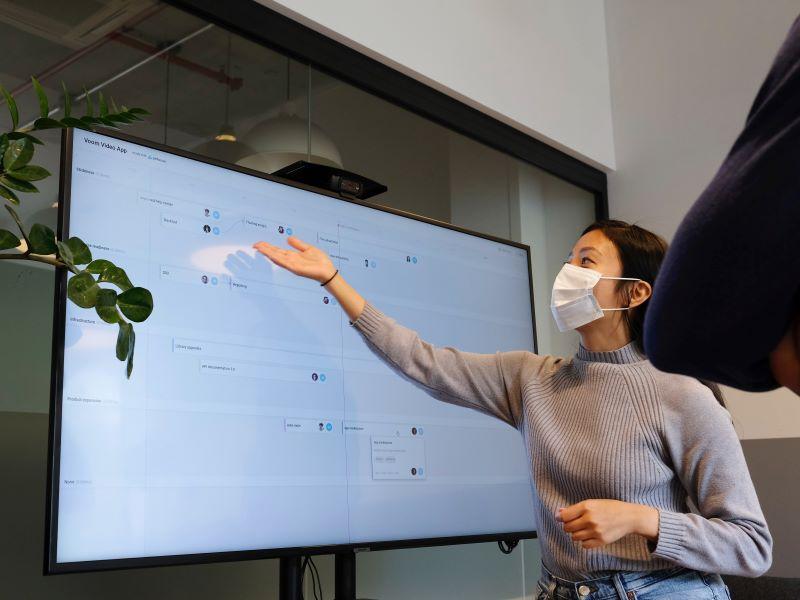
These are the best practices and most common mistakes in learning assessment
Cecilia Tagliapietra Ovies says that, while there is no single formula for learning assessment, there are certain basic principles institutions can follow to help ensure success
Concerns over the impacts of the pandemic on HE brought the issue of learning assessment to the forefront of many educators’ minds. However, at the time, institutions had their hands full just trying to make their transitions to digital learning as smooth and effective as possible. Of course, most schools have now resumed in-person learning and the calmer atmosphere is a good opportunity to return to the issue of learning assessment, to reexamine existing assessment processes and, if necessary, revise and build upon them.
However, in my work as a learning assessment consultant I see many mistakes and lost opportunities. While there is no single magic formula for learning assessment because each institution is unique, there are certain basic principles that any institution can follow to avoid the most common mistakes and help ensure success.
- Help your students to become assessment literate
- How can generative AI intersect with Bloom’s taxonomy?
- ChatGPT and generative AI: 25 applications in teaching and assessment
First, it’s helpful to begin with a definition of what assessment is. Assessment scholar Peggy Maki has defined it as the means by which an institution examines its educational intentions and goals on its own terms within the complexity of learning. A common mistake for higher ed institutions is to not take into account their own unique situations and needs. For example, a two-year college’s educational goals and processes will inevitably differ from a four-year research university’s goals and processes.
Part of the problem is that colleges and universities have a common tendency to resist change. Change and leadership expert Adrianna Kezar has called this “higher education’s immunity to change” and, because of it, creating change requires a multidimensional, systems-based approach. For this, I have found four elements identified by Kezar to be highly useful. Let’s examine these one by one.
Develop a leadership team
A common mistake is to have a single person or small group be entirely in charge of defining and planning an institution’s learning assessment, criteria and instruments. The process cannot prosper this way; nor can it permeate the institution the way it needs to. The solution is to develop a broad leadership team that is faculty-led and where faculty is at the centre of decision-making. It’s also important to involve senior leadership – such as the provost, deans and department chairs who have the ability to make budget-related decisions – and keep them informed throughout the entire process.
Knowledge of strengths and challenges
As mentioned, it is best to involve faculty and staff as much as possible, but it is also necessary to recognise that they have capacity limitations because of their classes, research and other extracurricular activities. It’s therefore best to not be overly ambitious when establishing an assessment cycle for a specific programme or for institutional learning outcomes.
Next, change doesn’t necessarily mean changing everything. There may already be established practices that work well and can be maintained. Build on those. And build upon what faculty and perhaps student support services are already doing in terms of assessment. At the same time, identify what is missing or needed. Perhaps it’s a clearer, better-thought-out assessment plan. Or maybe there needs to be additional IT support or services. Or there needs to be more training for faculty and staff to create instruments to use the LMS (learning management system) or AMS (assessment management system). These are challenging but necessary conversations to move the institution’s learning assessment forward.
Recognise deep-rooted values, beliefs and fears
Another important but difficult area is identifying underlying values, beliefs and fears. For example, at many institutions, accreditation is the primary focus underlying their approach to assessment. But accreditation should not be the focus. Instead, institutions should focus on student success and achieving their desired educational outcomes as they have defined them. Most accrediting agencies don’t tell you what your educational goals should be or how you should go about creating assessments. Rather, they want you as an institution to define how these should look at your particular school. By focusing on student learning and success, the likelihood of accreditation naturally increases.
It’s also important to look for and recognise fears. A common one for faculty members is that disappointing assessment results will impact decisions related to tenure or staffing. Quite often, these fears may be justified because of their institution’s actions in the past. Acknowledging these fears is the only way to start moving past them.
A meaningful process for everyone involved
For faculty and staff to remain invested throughout this process, it has to be meaningful for them. This can be achieved in a number of ways. As mentioned, one way is to recognise and build on what faculty are already doing in terms of assessment. Another is to work in a very structured and sequenced way, with each step of the sequence having a clearly defined purpose and desired outcome. Always celebrate and communicate any successes through emails and newsletters. And even when there isn’t good news, frequently acknowledge the time and effort people put in.
Another way to make the process meaningful is to identify and suggest potential opportunities for research or publication. This can be especially appealing for faculty who are on tenure or tenure track, and it can help shift the perception of assessment from being a problem to an opportunity.
Next, many institutions view assessment as a one-time process but it needs to be approached as a dynamic process of continual improvement. Equally importantly, ongoing discussions of what is working and what isn’t are needed, with all of these discussions and results recorded and documented. When analysing results, separate the actual results of the assessment from the plan and process. In other words, just because student performance was lower than expected doesn’t mean that the assessment plan wasn’t good; conversely, even if student performance is high there may still be room for improving the assessment process.
Finally, consider every possible implication of assessment results and use them to inform decisions about faculty training and student support services. For example, let’s say you find that students are performing poorly in information literacy. The solution may not be asking faculty to assign more research papers. The real problem may be that faculty actually lack the training needed to properly teach this competency to their students. In fact, this is exactly what I experienced when coordinating the learning assessment here at CETYS (Centro de Enseñanza Técnica y Superior) many years ago. We found that by adequately supporting faculty with the training they needed they were able to properly train their students, whose information literacy results improved significantly.
Of course, one article cannot possibly cover every best practice or every common mistake related to learning assessment. But in my work, I have found these to be the most important basic principles. Any institution wishing to improve its assessment processes and outcomes should therefore start with these as their foundation.
Cecilia Tagliapietra Ovies works in the CETYS University System, Mexico, coordinating the Center for Academic Development and Improvement and coordinating institutional assessment. She also provides training and guidance to faculty on the assessment design and deployment process.
If you would like advice and insight from academics and university staff delivered direct to your inbox each week, sign up for the THE Campus newsletter.

.png?itok=0-eszYM2)


